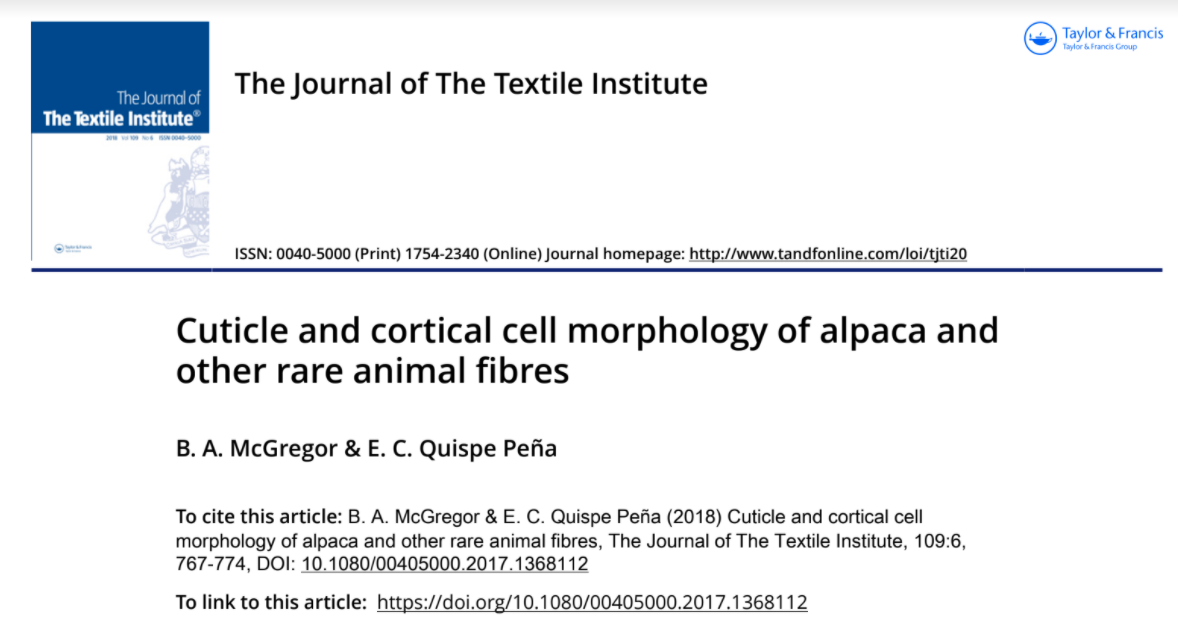
ABSTRACT
The null hypothesis of the experiments reported is that the cuticle and cortical morphology of rare animal fibres are similar. The investigation also examined if the productivity and age of alpacas were associated with cuticle morphology and if seasonal nutritional conditions were related to cuticle scale frequency. Cuticle and cortical cell dimensions and ellipticity of the fibre cross section were investigated in 32 samples of cashmere, alpaca, mohair, bison, qiviut and vicuña from various origins. In addition, 24
Peruvian alpaca samples from animals ages 2–6 years and of varying fleece productivity were examined.
Cuticle scale frequency, cuticle thickness and cortical cell dimensions (length, diameter, volume and ratio of length to diameter) and ellipticity differed between fibres and cuticle scale frequency also varied with mean fibre diameter. For Peruvian alpaca fleece samples, cuticle scale frequency varied with the age of alpaca and fleece productivity. Fibre ellipticity increased with increasing fibre diameter. Cortical cell length was strongly related to cortical cell diameter. The cuticle scale morphology of these rare animal fibres did not have fixed dimensions. Using cuticle scale morphology as a diagnostic tool to positively identify rare natural animal fibres needs to standardize measurements for fibre diameter but will still be affected by differences in animal productivity.
KEYWORDS
Quality; identification; physical properties; ellipticity; luxury fibres.
